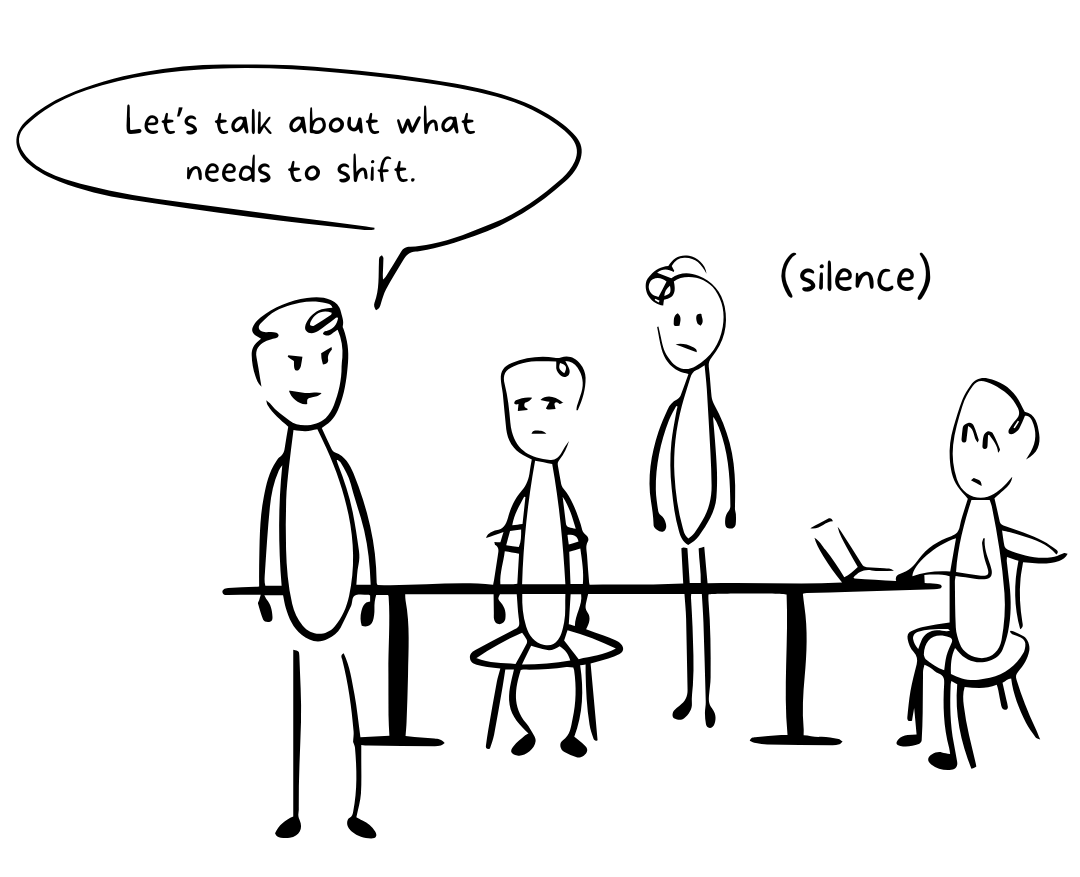Why Uncertainty Shuts Down Teams | Mindshift Moments

The Moment:
Your company just rolled out a big change that directly impacts your department. You need your team to get on board, fast.
So in your Monday team meeting, you ask everyone to start brainstorming what shifts you’ll need to make to adapt. What you get instead is… silence. Maybe a few side-eyes. Someone mutters, “Here we go again.”
By Wednesday, you’re noticing the whispering. A couple of people pull you aside one-on-one to vent or complain. By Friday, it feels like the team is splitting into little camps. Meanwhile, the deadline for implementation hasn’t moved and you’re the one on the hook to make it work.
The Mindshift:
What you’re seeing isn’t resistance - it’s biology. Our brains crave certainty. We are kind of addicted to it, actually. And when things feel unpredictable, we don’t lean in, we pull back. The uncertainty flips the switch into self-protect mode. People turn inward, cling to what feels familiar, and reach for any small thing that gives them a sense of control: whispering in side conversations, staying silent in the group, coming to you privately to test the waters, pretending its business as usual instead of wrestling with the big change in front of them.
The irony? The moment you most need their creativity, problem-solving, and bold ideas is the moment their brains are most likely to shut down. And until you address the uncertainty in the room, no amount of pep talks or pressure will change the behavior.
The Strategies:
Here are three ways to keep your team’s brainpower online when things feel uncertain:
1. Name the fog:
Don’t pretend you’ve got all the answers or that everything will be ok. Acknowledge what’s unclear and what’s not. Say out loud what everyone’s feeling: “I know this feels messy right now. Some things are clear, some things aren’t, and that’s okay.” Or ask them to name it. Naming it lowers the threat response. Try asking:
- What feels most unclear right now?
- What would help you move forward even without all the answers?
- What’s one thing you’re most curious about as we head into this change?
2. Shrink the horizon:
Big, ambiguous goals overwhelm. Break down changes into shorter, achievable next steps so people can see wins faster. Instead of saying, “We need to transform the whole department,” say: “Here are two things we can test in the next 30 days.” Ask:
- What’s one small experiment we can run right now?
- What would progress look like by next week?
3. Anchor certainty where you can:
When change feels overwhelming, people’s brains search for something solid to hold onto. What things can you and the team be certain of? Even small anchors (like a clear timeline, a value that won’t change, or a practical detail) help. For example:
- What won’t change is our commitment to supporting clients.
- Your desk is not moving.
- Your desk will be moving, likely by the end of the month. I’ll confirm the exact date as soon as I can.
- I’ll provide you with an update every Wednesday, even if there are no changes.
- We are still launching in Q2. If that shifts, I’ll let you know right away.
The point isn’t to have all the answers, it’s to name with confidence what is true. Those anchors of certainty give people the stability they need to re-engage and move forward with you.
Fumbling change doesn’t just slow projects - it erodes trust, drains energy, and fuels disengagement. Whispering in the corners becomes resistance in the open. And that costs you time, focus, and often your best people.
Anchor certainty and lead with clarity, and you don’t just get buy-in, you build resilience. That’s the difference between teams that stall out and teams that thrive through change.
